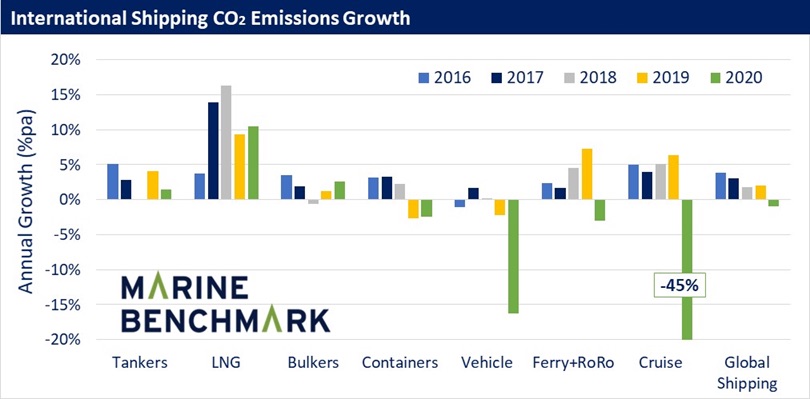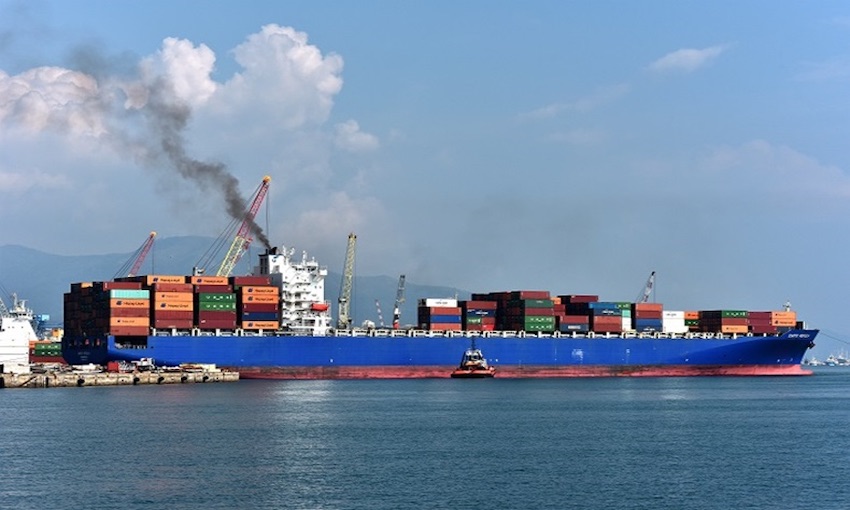MARITIME data provider Marine Benchmark reports that CO2 emissions from global shipping decreased by 1% last year due to the pandemic.
Carbon emissions among the “Big Three” – tankers, bulkers and containers – actually increased 1.2%, with a 2.4% decline in container emissions offset by growth in the bulker and tanker sectors. However, the smaller sectors reversed this growth, with cruise ship emissions experiencing the greatest contraction – down 45% – and with steep declines in ferries, roro’s and vehicles carriers consistent with the weak demand.
Torbjorn Rydbergh, Marine Benchmark’s CEO, said, “The coronavirus pandemic has had a varied effect on shipping, with tankers and bulkers generally performing well, while other sectors faced headwinds as consumer demand plummeted.
“Whilst the overall result is a decrease in carbon emissions for last year, the effect may be temporary as the current recovery in global economic demand points to stronger 2021 shipping activity.”
Vessel CO2 emissions are calculated from the carbon content of the fuel consumed. Marine heavy fuel oil is approximately 86% carbon, which implies about 3.15 tonnes of CO2 per tonne of fuel consumed. Since the carbon content of diesel (gas oil) is slightly higher, so too are the CO2 emissions per tonne of fuel consumed.
Actual vessel fuel consumption depends on a range a range of factors, but primarily the hull, engine and propeller design, vessel displacement (draft), speed and fouling, as well as hydrological and meteorological conditions (including wind, waves and current).
Marine Benchmark’s proprietary algorithms estimate vessel fuel consumption by main and auxiliary engines, based on these factors, utilising hourly AIS data for all IMO registered ships spanning more than 10 years.


